A customer visits your dispensary for the first time.
When you ring them at checkout, they insist there’s been a mistake. No way could the total price be so high for a $35 eighth! But alas, between excise tax, state sales tax, and local business taxes, customers are paying 20 to 40 percent in taxes on every cannabis purchase. It’s no wonder consumers nationwide are experiencing sticker shock.
This scenario is all too common, especially in states like California or Michigan, where multiple types of taxes are compounded on a single transaction. Your dispensary POS software should make it easy to add cumulative taxes and post-tax fees.
Before diving into the steps to set up taxes in your POS, let’s review the types of taxes typically charged at cannabis retailers, how to calculate cumulative taxes, and best practices for compliant cannabis taxes.
Types of cannabis taxes
In traditional retail, taxes are charged as a single percent on a subtotal. For example, if an item costs $35 and the sales tax is 8.5%, the total would be $35 + $2.98 = $37.98.
It’s no secret that cannabis taxes are higher (no pun intended) and more complex. Depending on local laws, you can expect to charge one or several types of taxes at your dispensary.
The most common types of cannabis taxes include:
Excise tax
The excise tax is a business tax specifically for cannabis products that are passed on to the customer.
In California, if a retailer purchases wholesale products, the 15% state excise tax is typically included in the price of the item. If a retailer is vertically-integrated from their cultivation and/or distribution, the excise tax can either be included in the price of the item or added to the customer receipt.
Similarly, Nevada imposes a 10% excise tax on retail sales and a 15% tax on wholesale cannabis. Colorado also places an excise tax of 15% on the Average Market Rate (AMR) or contract price of retail marijuana. One marijuana excise tax return is required for each retail marijuana facility.
All legal cannabis sales must include the excise tax which is collected quarterly by the state to be used for various initiatives such as mental health treatment, substance abuse programs, environmental efforts, and cannabis research.
Sales tax
The sales tax is the traditional tax we’re all used to paying when we make purchases. The tax rate differs from state to state and city to city, usually it’s between 4 percent and 17 percent. For example, the rate in Oregon is 17% while the medical marijuana sales tax in Montana is 4%. In states like California and Maryland, medical patients can avoid this tax with a valid medical marijuana identification card (MMID).
Sales tax is added to the state’s general fund and is often used towards public safety, health programs, local transportation, and education.
Local business tax
Local taxes, municipal taxes, or post-tax fees are determined by local governments. It is up to their discretion whether or not to apply this tax. Medical patients may be exempt from the local business tax or pay a lower tax rate than adult-use customers.
With all these potential variables, total taxation can vary widely even within the same state. In California, for instance, you can expect different tax rates in Oakland vs San Diego vs San Francisco vs Los Angeles.
To learn more about the taxation requirements in your state, see your state’s page below.
How to calculate cumulative taxes
Not only are retailers expected to collect multiple types of taxes, the order in which they are calculated matters — or you’ll risk charging the wrong amount.
Most states, like Colorado, Oregon, and Massachusetts, calculate all taxes against the subtotal. Others, like California and Michigan, calculate each tax against the gross receipt plus applied taxes. We call this type of layered calculation “cumulative taxes.”
In either case, tax calculations always follow a specific order:
- Excise Tax
- Sales Tax
- Local Business Taxes
Let’s walk through a tax calculation example, assuming the following tax types and amounts:
- Subtotal = $35
- Excise Tax = 15%
- Sales Tax = 7.75%
- Local Business Tax = 5%
Imagine this is a vertically-integrated micro business, configured to pass the excise tax to the customer on the receipt.
Normal tax calculation against the subtotal would give you a grand total of $44.71:
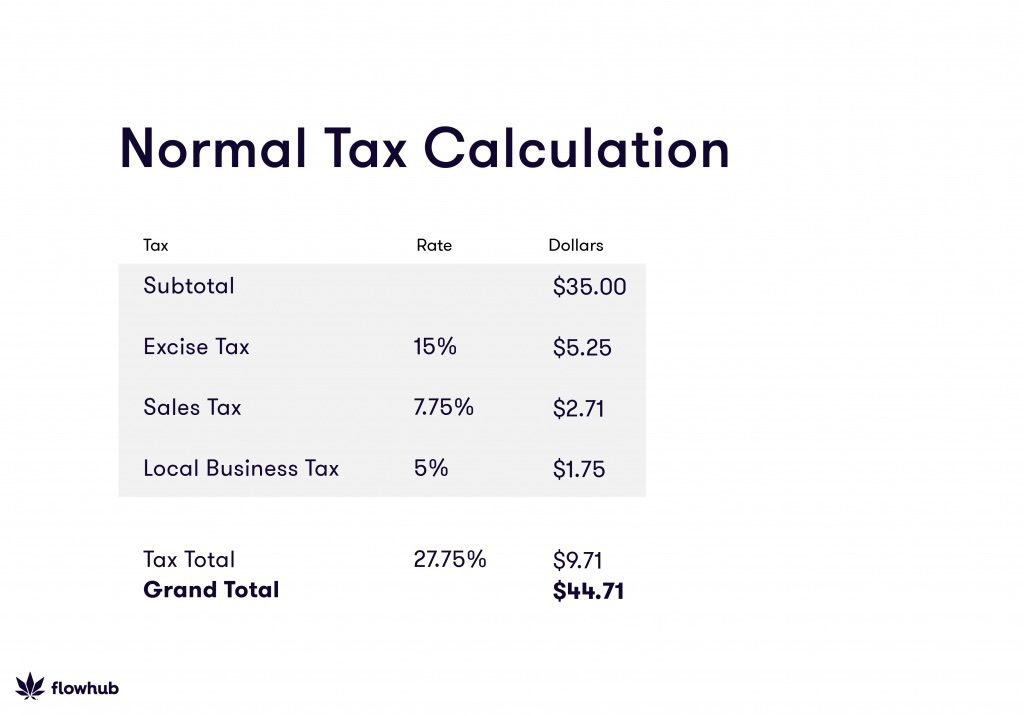
Cumulative tax calculation would give you a grand total of $45.54:
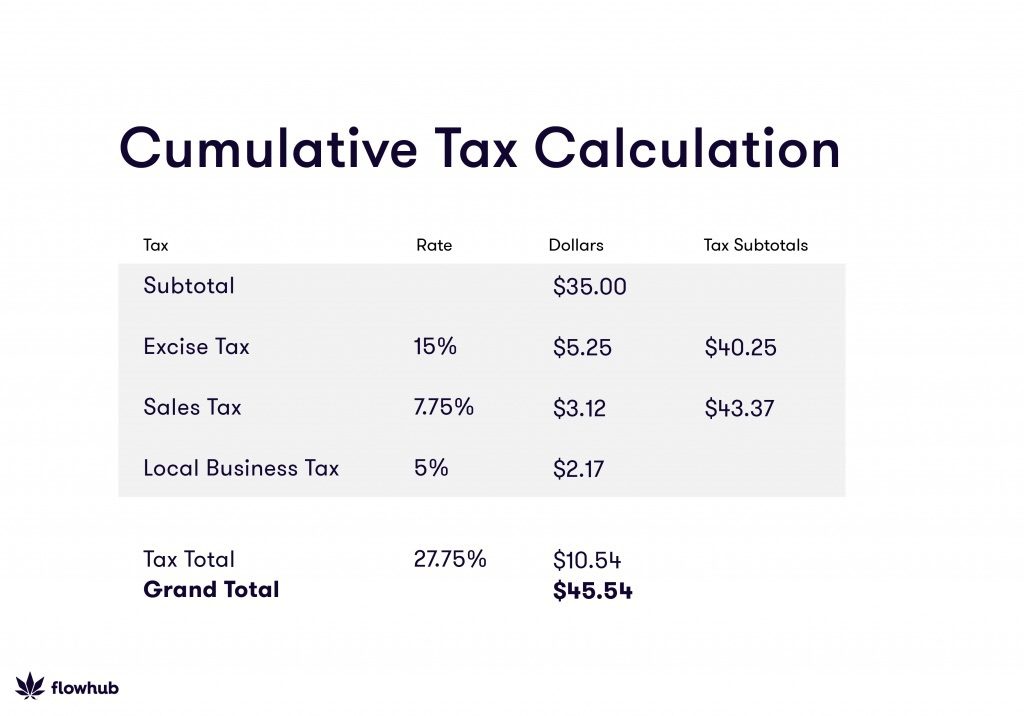
As you can see in the table above, the state sales tax rate is calculated on the sum of the subtotal + excise tax. ($35 + $5.25 = $40.25 * 7.75% = $3.12)
Similarly, the local business tax is calculated on the sum of the subtotal + excise tax + state sales tax. ($35 + $5.25 + $3.12 = $43.37 * 5% = $2.17)
Curious how your city stacks up? See how taxes are affecting consumers by comparing the cost of a $35 eighth of retail cannabis, plus taxes across eight major US cities.
Click here to view the infographic
Best practices for compliant cannabis taxes
As you navigate the confusing nuances of cannabis taxes, keep these five tips in mind:
Understand your local tax laws
Cannabis taxes are complicated. Before setting up automated tax calculations at your dispensary, be sure to research your state and local laws. You don’t want to be in a situation where you’ve been collecting taxes incorrectly, so consult your accountant or seek legal help to ensure your compliance and accuracy.
Keep detailed records
Cannabis retailers are required by law to keep business records verifying the accuracy of sales. Using a dispensary point-of-sale system specifically built for the cannabis industry will help you track inventory, log activity for every sales transaction, and save a record for every customer who visits your dispensary.
Documenting everything gives you a paper trail of compliance so in the event of an audit, you’ll be able to prove exactly where your profits come from and where your products are from seed to sale.
Set an order of operations for tax calculations
Tax rates can differ depending on local or state laws. You can have several different types of taxes including an excise tax on marijuana products and local or municipal taxes on top of statewide sales tax. Ensure you are charging the right amount in taxes by using cannabis POS such as Flowhub. You’ll be able to determine the order in which taxes are applied, have greater visibility into how they are calculated across dispensary locations, and have confidence that you are accurately collecting taxes from your customers.
Be transparent with customers
Help your customers understand exactly what taxes are being charged by clearly printing tax details on your receipts. Doing so will alleviate price complaints and visually explain how their total cost was calculated.
Train your staff on each type of tax so they can intelligently answer customer questions and provide education about how cannabis tax revenue is being used to improve local communities.
Fight for fairness
Take a stand against excessive cannabis taxation and demand fair prices for consumers. If the total cost of cannabis is unaffordable, consumers will continue turning to the underground market to save a buck. If the taxes keep climbing for dispensaries, the industry will push out smaller players who can’t afford to stay in business.
Do your part to lobby lawmakers for responsible and ethical cannabis regulations in the legal market. Fairly-priced cannabis benefits the entire industry.
Setting up cannabis taxes in Flowhub
Now that we understand how cannabis taxes work, how to understand cumulative taxes, and why this distinction is important, let’s dive into how this works in Flowhub.
Gross vs. net taxation
Depending on the tax rates levied in your state, you may need to collect tax on the gross receipt or sale price of the products. Ultimately, this means before any discounts are applied to the items in the cart.
Flowhub allows you to designate which tax rates should be calculated before or after discounts. If you want your tax rate to calculate before any discounts apply, select that option when creating the tax.
To turn that feature "on" in Flowhub, simply check the box to "Calculate Before Discounts." Be sure to consult your state and local tax laws before enabling this feature.
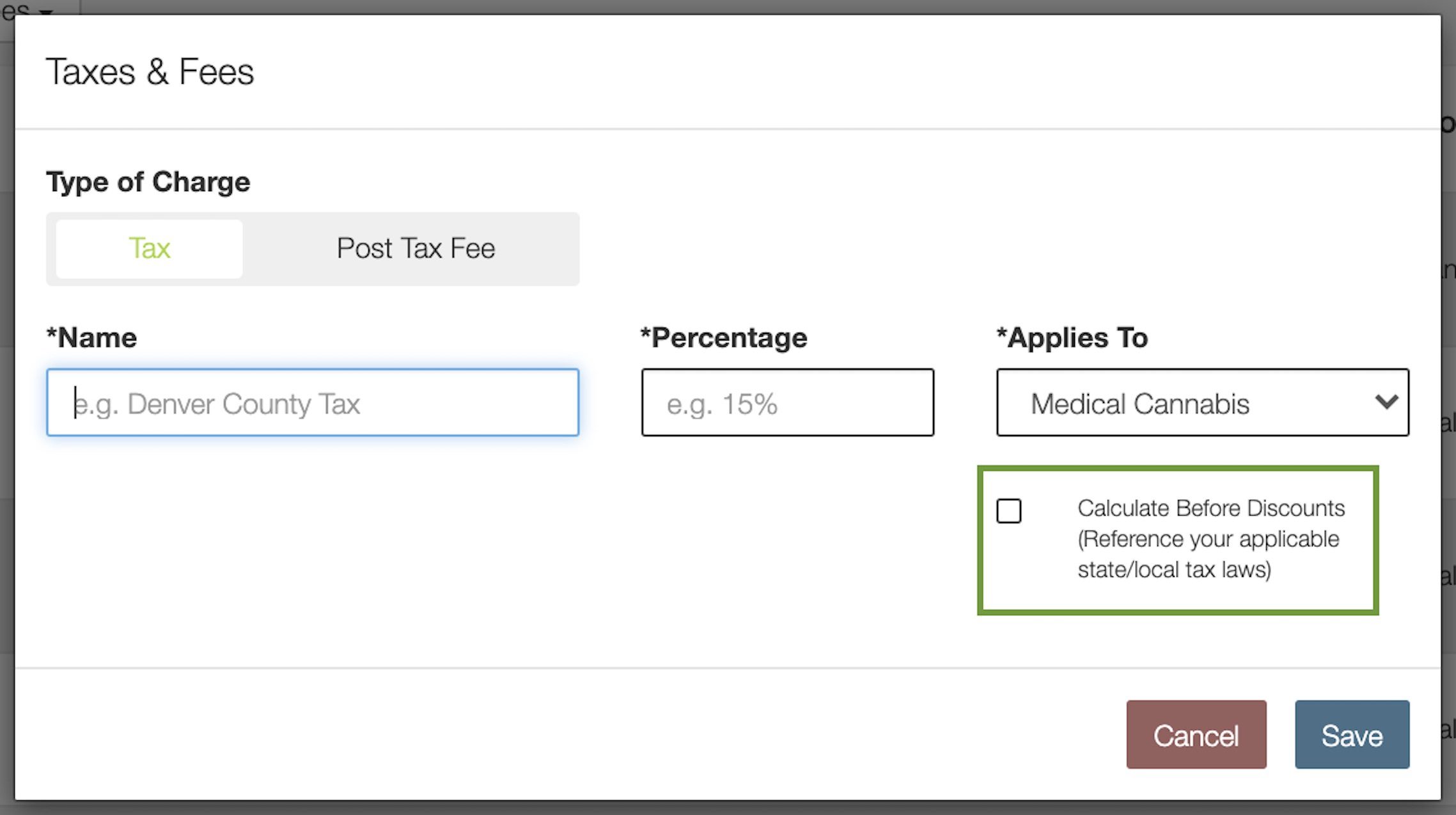
How to calculate cumulative taxes
As illustrated earlier, some places like California and Michigan calculate taxes with other taxes included. They are compounding and there is an order of operations that must be followed to calculate taxes correctly. Certain taxes are calculated first, second, or third.
With Flowhub, you can set up this order of operations in just a few clicks. Doing so will give you clear visibility into exactly how your taxes are calculated.
In order to use this feature, you need “Manage Taxes” permissions. Because taxes are sensitive, we recommend only giving this permission to select people.
Read this article for the step-by-step process of setting up cumulative taxes in Flowhub.
Once you’ve established cumulative taxes, Flowhub gives you the ability to generate an example calculation to ensure everything is calculating correctly. You’ll see a detailed breakdown of your tax calculations for both arm’s length and non-arm’s length transactions.
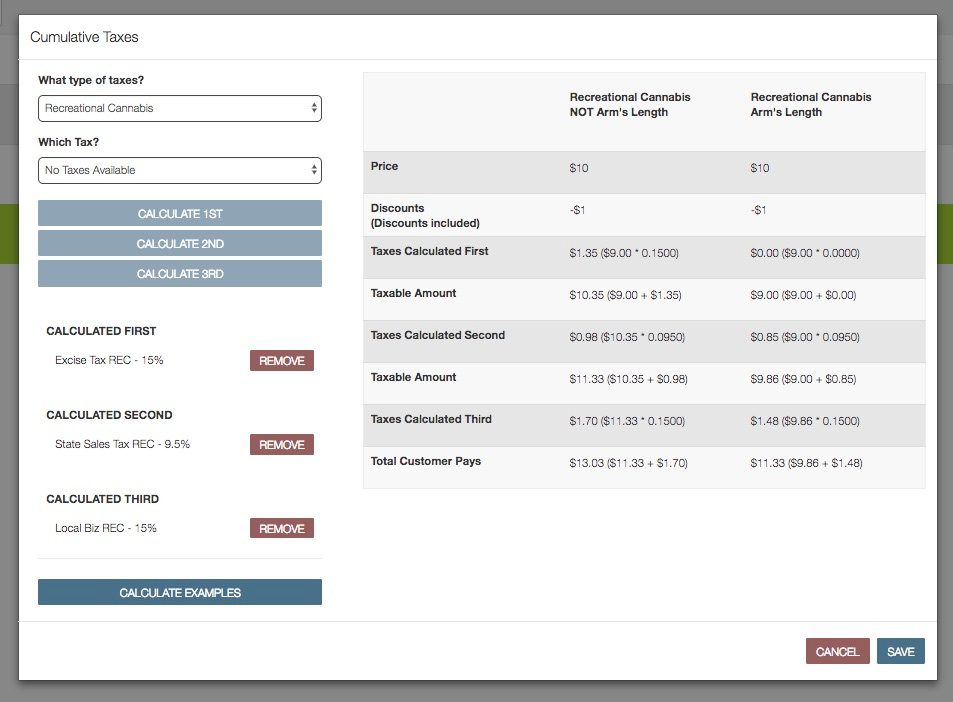
Once you’ve set up your cumulative taxes, click "Enable Cumulative Taxes" to turn them on in the cart. After cumulative taxes are enabled in the cart, its seamless implementation flows to the cart, receipts, and reports.
For more details on setting up cumulative taxes, visit our Help Hub.
How to automatically collect post-tax fees
Some municipalities charge dispensaries a flat post-tax fee, instead of a tax.
A common workaround is to add an accessory to the cart for every retail sale. However, this can skew your “Top Seller” statistics and makes for messy accounting.
Now, Flowhub users with “Manage Taxes” permissions can create a post-tax fee in Location Management.
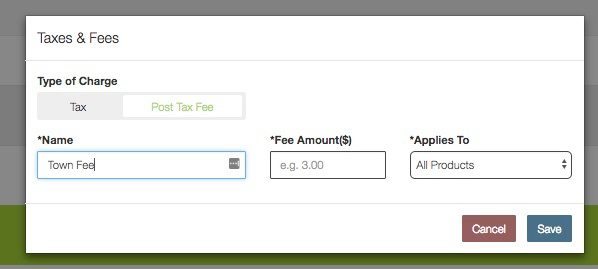
In the cart, the fee amount will display below taxes for each sale.
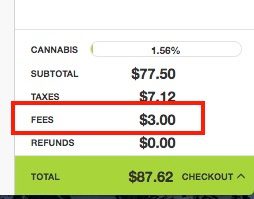
Similarly, post-tax fees will be visible on the sales report in "Reports New."



